Last summer, the Fossil Rim Education Department began a journey of curriculum transformation that is going to pay off in a huge way for guests in 2020 and beyond.
The education team who worked hard to turn a plan into reality includes Director of Education Jennifer Arledge, Curator of Education James Morgan, Reserved Programs Supervisor Andrew Bullard, Visitor Programs Supervisor Will Baker, Education Specialist Emily Little, Education Specialist Mark Phillips, and Environmental Education Apprentice Brianna Sorber.

Arledge talked about the decision to make sweeping changes.
“It was perfect timing,” she said. “The restructuring and hiring changes to the education department last year, coupled with the changing landscape of environmental education, gave us an opportunity to assess current programming with an eye to the future. With the increasing need for our style of informal teaching – project-based learning and hands-on experience – we decided that our future would be found in immersive programming that complemented what our participants were already learning. Fortunately, Fossil Rim’s educational facilities allow for more immersive programming than many facilities are able to achieve so that participants can see science and conservation in action, not just theory.”

The education department strives to support Fossil Rim’s mission. The department’s stated purpose is “To facilitate individuals discovering their role and fulfilling their responsibilities within the natural world.”
“Some of our previous programs had been in place for the past decade, and we have some longtime education guests,” Morgan said. “We appreciate their consistency, and we want to offer them fresh programming where we utilize the beautiful 1,800 acres we have. It was great to have Jennifer come in and want to create some new, immersive content.
“Our audiences can be extremely diverse with groups from the cities or rural communities. We want to make sure all of this is inclusive.”

Baker and Bullard love where the department is headed.
“When you look at the members on our education team, I think everyone bought in on this new direction,” Baker said. “It wouldn’t work unless everyone was on board.”
“There is a big shift in education, in terms of moving toward a more immersive, interpretive approach,” Bullard said. “We need to give kids the tools to make their own informed choices and get engaged with nature and animal species on a global scale.”
Arledge agrees that the education needs of the consumer have changed.
“Kids are now much more informed about the environment than they were at the same age years ago,” she said. “There is a lot more information available to them now, so I think our role has changed. We need to facilitate their learning of how they can help out our planet. If we can help participants become conservation advocates, their combined efforts can be very powerful.”
Core Programming Levels
To ensure that they achieve their goals, the education department relies on a tiered foundation to programming: “Discover,” “Understand,” and “Engage.” Accordingly, the staff uses the acronym “DUE.”
“When we are dealing with Discover, groups who may not have a lot of experience out in nature – we want them to discover our animals, land, and develop appreciation,” Bullard said. “This level is our main focus with younger students of nature.”
What about Understand?
“We start tackling more advanced concepts requiring critical thinking,” Bullard said. “This level includes participants who are ready to take their appreciation of nature and apply a more detailed, scientific view of the natural world.”
The next level is Engage.
“This is the call-to-action level,” Bullard said. “We want these students to be advocates for nature and learn how to make an impact in their everyday lives. These will often be older students who arrive with a background knowledge of the topics we are going to get into. At the same time, younger students will have an opportunity to engage through post programming by making a project that can help species where the students live.”
As Arledge explains, all of the new programming was created with DUE in mind.
“Everything we do now includes at least one of these levels to ensure we reach our intended audience and fulfill our purpose within Fossil Rim’s mission,” she said. “These programs are designed to be relevant after our guests have returned to where they live. For example, we have plans to issue challenges to program groups through social media and get the students to mentor each other even when they are not at Fossil Rim.”
Educational efficacy is essential to the department.
“A big part of effective educating is meeting your audience at their level,” Baker said. “Considering DUE allows us to set up our audience for learning success.”
Specialization Is The Name Of The Game
More than ever, the department is considering its target audience. With this increased emphasis on customizing to the student, the programming falls under a conceptual umbrella the staff calls “Environmental Education With A Texas T.W.A.N.G.”
What is T.W.A.N.G.? Teaching What Affects Nature Globally.
“Fossil Rim is a very unique institution, and we wanted programming to reflect that,” Baker said. “For Environmental Education With A Texas T.W.A.N.G., the goal was to have programming that incorporates the great aspects of our Texas landscape and native species where we discuss accountability and responsibility toward that Texas land and wildlife. At the same time, we’ll tie in global issues that we face as stewards of the environment.”
Reserved Programs Overview
The department now has two main focuses: reserved programs and visitor programs. The specialization theme is definitely most prominent in the reserved programs.
With the goal of immersive content to boost learning and retention, each reserved program includes a minimum of three integrated learning sessions or experiences.
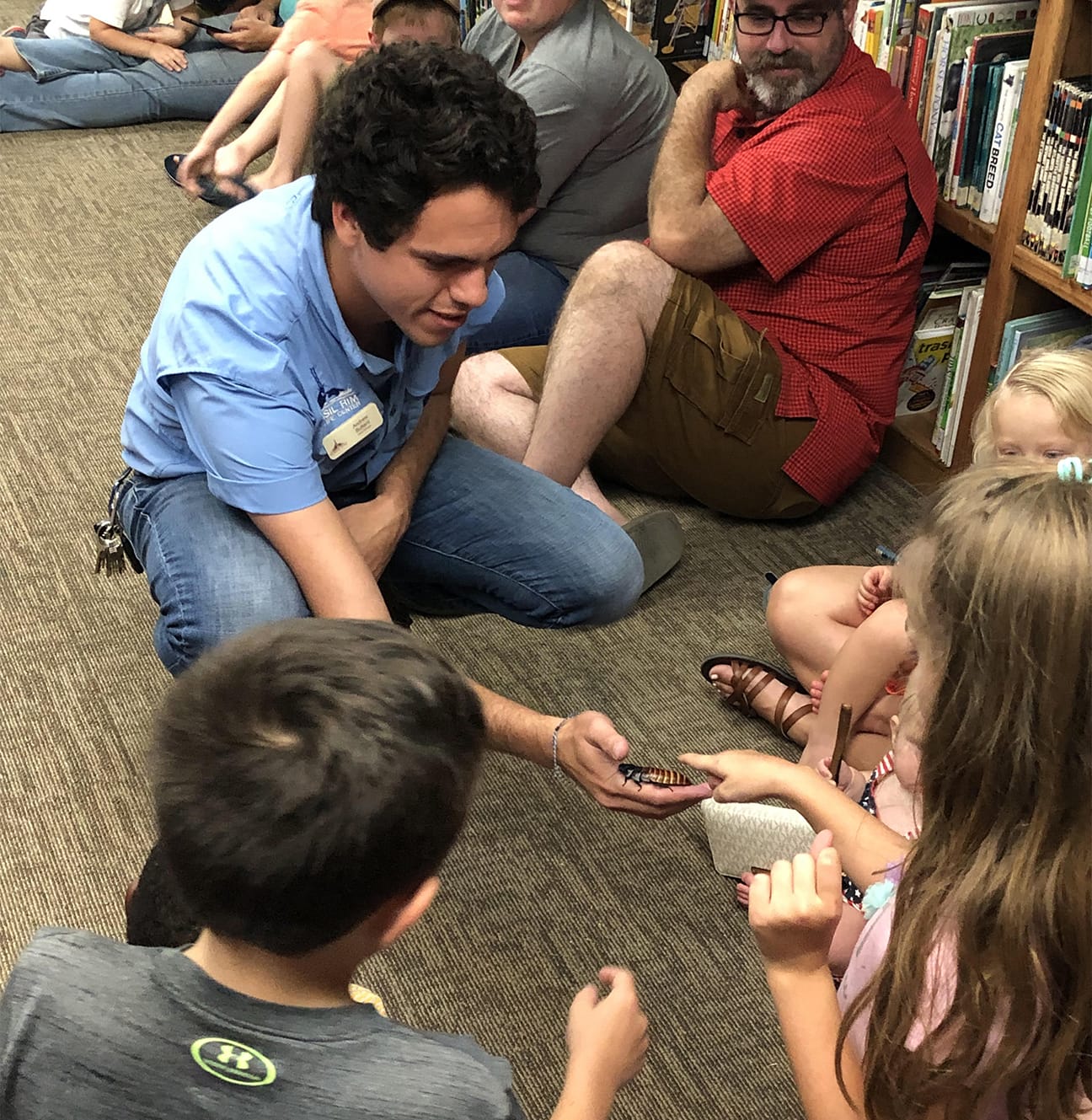
“For these, we are talking about preprogram before the student arrives, the program at Fossil Rim, and then the post-program after they have returned to where they live,” Bullard said. “We want to engage students several times during each experience. For pre, get them thinking about the concepts they will be encountering at Fossil Rim. For post, it will be something that engages their brains to retain what they learned here in order to apply it to their lives.
“Ideally, it might lead to some lifelong habits. If you are studying for a test, just looking at the material once isn’t going to be very helpful; you really need to understand and be able to apply the information.”
Reserved programs will either last four, six, 24, or 48 hours. Students in grades 3-5 are eligible for the four- and six-hour programs. Students in grades six and up are eligible for all programs.
“We believe that immersive programs naturally lend themselves to older audiences – especially for overnight programs, since such an experience can be physically and mentally challenging,” Bullard said.
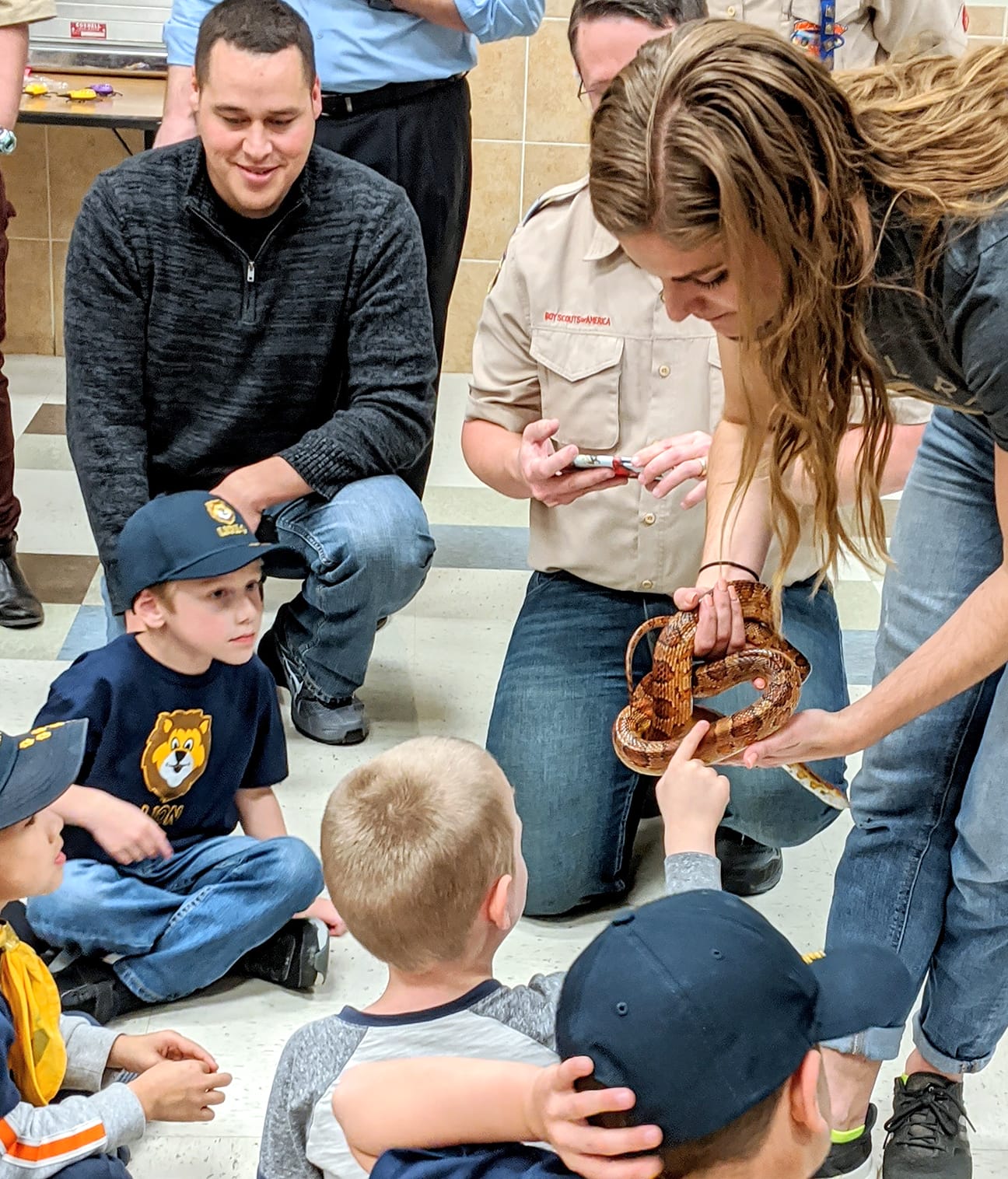
The staff said 30 students is the optimal group size for reserved programs, while 90 students is the maximum per day. The education department will be more than happy to accommodate groups larger than 90, but would ask that the students be split up into multiple groups in order to make the experience more enjoyable for everyone.
By the fall of 2020, there will be nine reserved programs to choose from. The department will head into April with two programs for students in grades 3-5, two programs for grades 6-8, one program for grades 9-plus, and one program for Girl Scouts.
Reserved Programs: Grades 3-5
“True Texans” is a one option for younger students, and it merges Texas pride with advocacy.

“Texas is a really big, unique state,” Little said. “There are many ecoregions and diverse animal species, so this program is about exploring the true Texas species that live here and how they deal with different environmental situations. The whole day, the students are learning about Texas natives and how they interact and adapt with their environments by ‘becoming’ a specific species.
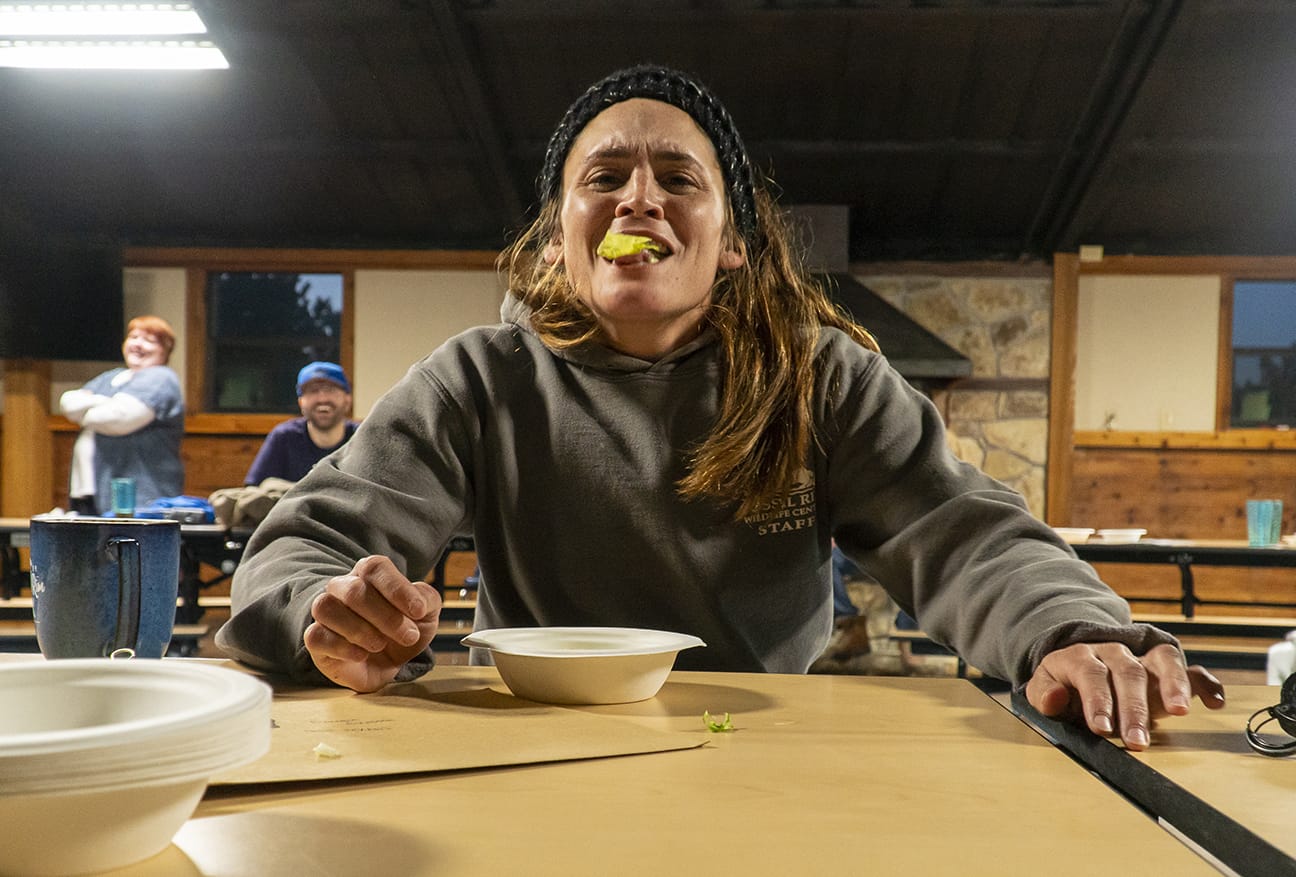
“‘Texas Showdown’ is the big activity at the end; they go for a final challenge to see if they can survive in Texas.”
“Keeping Up With The Conservationists” is the other option heading into the spring.
“We wanted to highlight the critters, or the unsung heroes as we like to say, of conservation,” Little said. “There are a lot of conservation movements happening, a lot of conservation science and research, so we think it is really important to look at what is happening in the environment right now that deals with conservation. We’ll ‘shrink down’ to the size of animals like cockroaches, millipedes, earthworms, and even microorganisms to see life from their perspective.
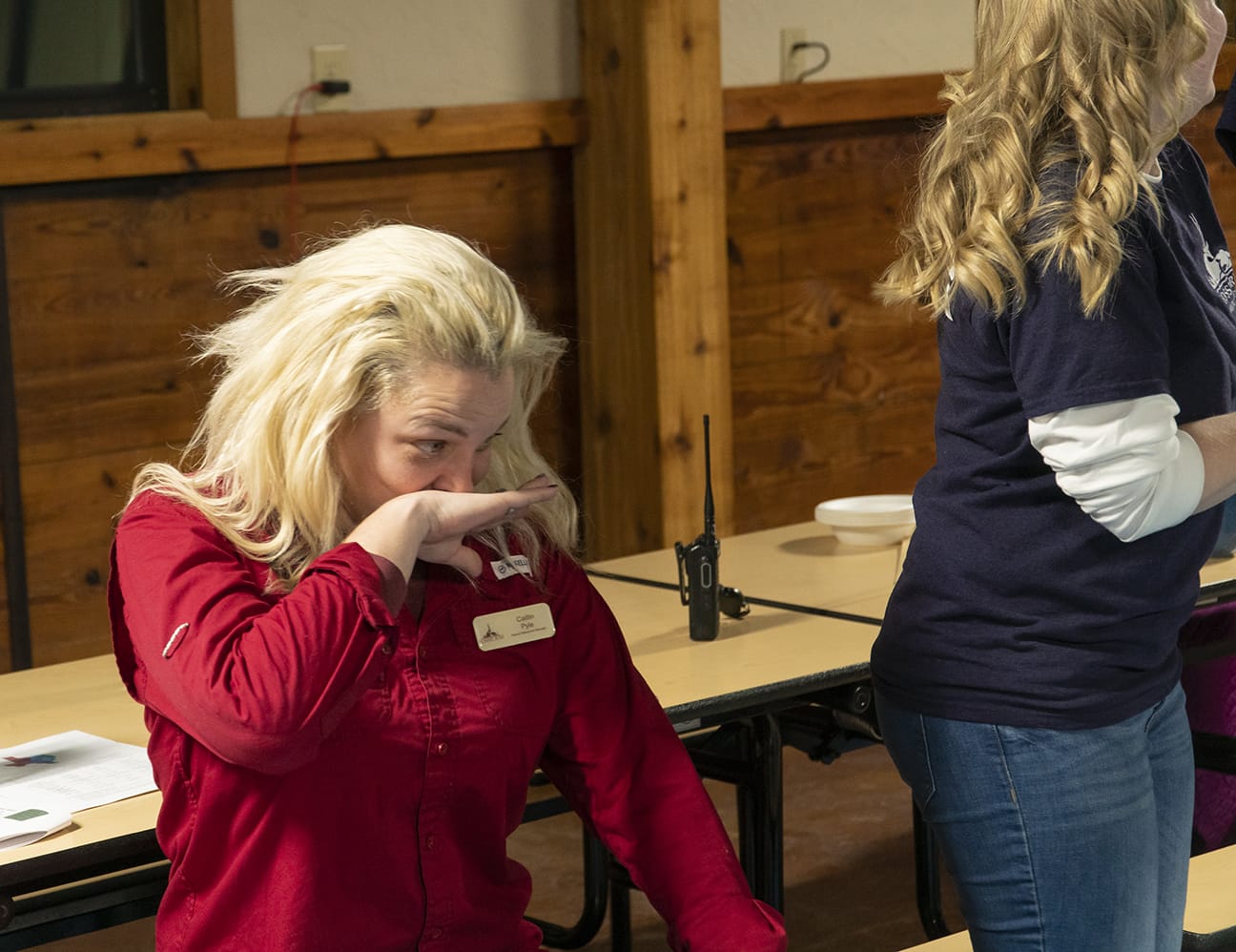
“The big relay at the end is really fun. It is a summation and application of what we’ve done throughout the whole day.”
Reserved Programs: Grades 6-8
“Help Wanted!” is one option for the middle school students.
“It will really show what Fossil Rim is, where we have come from, where we are going, and the role we play for conservation in Texas and even globally,” Little said. “Students will learn how Fossil Rim operates, such as when we decide to accept new animals and how we decide – we pick certain species for a reason and understand what we can do for their conservation.
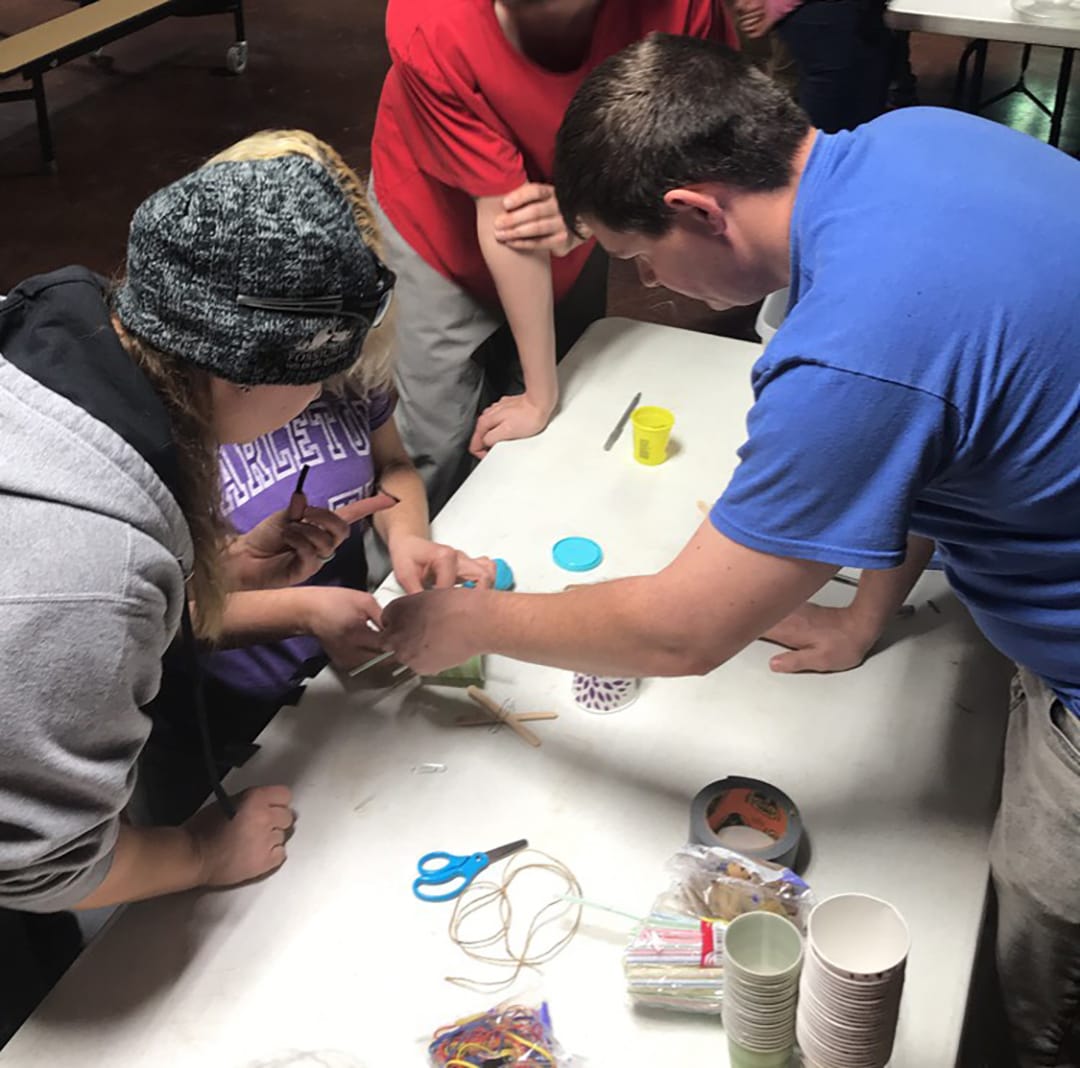
“We will be getting hands-on and learn about what our animal care staff does, including some behind-the-scenes stuff. We’ll get into some conservation math that is critical to understand how the animals get fed.
“They will get to be animal nutritionists and learn what it takes to be a Fossil Rim veterinarian. It will be neat for the students to understand these details.”

The other option for spring will be “The ‘State’ of Texas.”
“The students coming to Fossil Rim could easily be from a wide range of ecosystems, because Texas is so big,” Little said. “That size also means the state experiences most of the major conservation issues that the whole world is dealing with. The day is about walking through those issues and how they are impacting Texas.
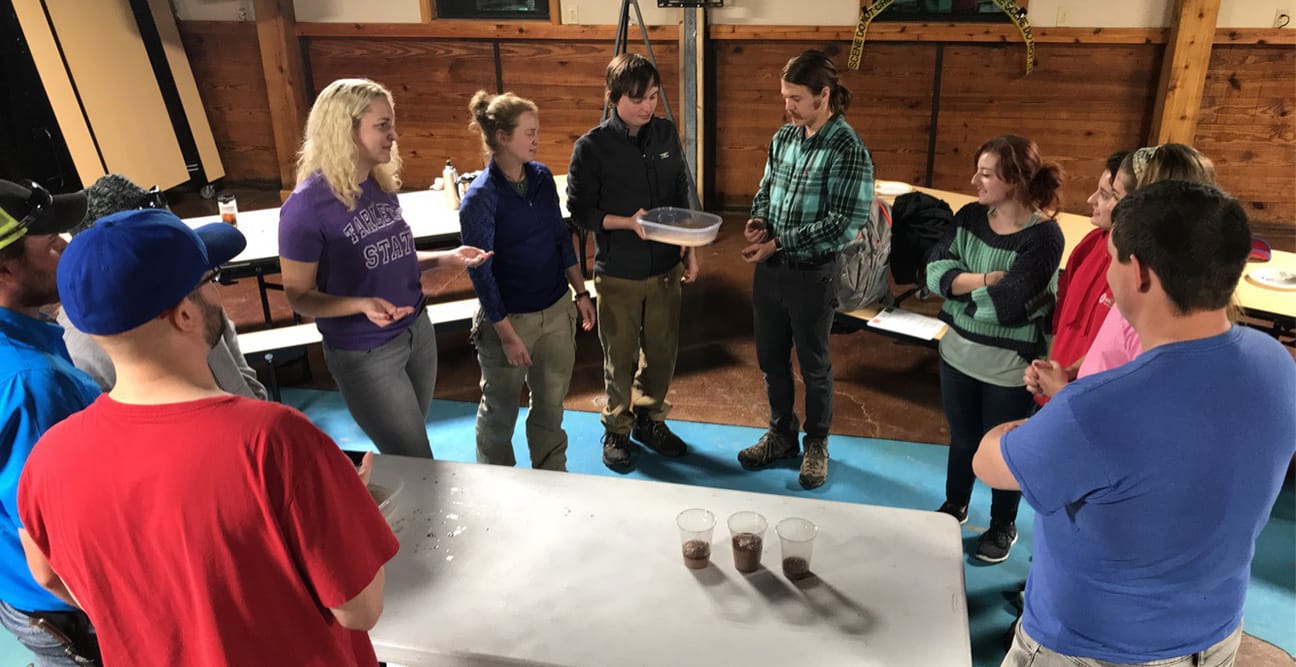
“We’ll also touch on their global impact and what we can do to address those situations – be proactive instead of reactive. The final evaluation definitely makes this program unique.
“The students are coming in as forensic scientists in training, so it’s a fun test to apply what they’ve learned and see if they pass. The whole day is about scientific method, hands-on learning, and how you would research real conservation issues to figure out solutions.”
Reserved Programs: Grades 9-12
The spring option for this older age group is called “No Vacancy!”
“This is a more advanced version of the Help Wanted program,” Little said. “We’ll go more in-depth and ask tougher questions. It involves more student discussions and they’ll address more serious conservation topics. For this program, we will try to get access to some places that the younger students won’t go; maybe also learn about some enrichment for different animals and get more direct interaction with the animal care staff.”
Reserved Programs: Girl Scouts
This program is called “Scouting With A Texas T.W.A.N.G.” Seniors and Cadettes will be eligible for program durations of 4-48 hours, while Juniors will be eligible for four- or six-hour programs.
“We still have targeted offerings for Girl Scouts,” Sorber said. “They have a new set of outdoor STEM badges to pursue. Our program will also focus on citizen science in general. Get the girls outdoors, on the hiking trails, and teach them about what they experience and their role in the natural world.

“Also animal tracking, ‘leave no trace’ principles, and camping so they are more confident about the outdoors. They will even be applying aerodynamics and birdwing structure to archery so that STEM and environmental education are in every part of their programming.”
Bullard pointed out that this program will be more immersive programming for Girl Scouts than Fossil Rim has previously offered. In fact, the whole program is based on the premise that participants are specialists brought in to complete missions assigned to them by “Mission Control.”
While the department will be working on accommodating interested Boy Scout troops in the future, there has always been exponentially stronger interest in Fossil Rim from Girl Scouts, as past event enrollments have reinforced.
“For Boy Scouts, they have a lot more camp options elsewhere and we haven’t been seen as a resource to the degree that Girl Scouts have seen us; however, we look forward to rectifying that perception in the future,” Arledge said.
Evenings With Education Enhanced Reserved Programs
Once per week on evenings in February, the education staff hosted Fossil Rim personnel from other departments in the Activity Center. One reserved program was presented and experienced each night: both programs for grades 3-5 and both programs for grades 6-8. The “Evenings With Education” helped the staff learn about the new direction Fossil Rim education is headed, plus the guests provided valuable, insightful feedback about how to make the programs even better.
“I think those four nights helped us immensely,” Bullard said. “Being able to have our staff experience the programs, see what we have been working on all these months, and become invested themselves was really cool. When Emily and I would write these programs, it worked in our minds, but what about with people actually doing them for the first time? Their feedback was so important.”
Everyone on the education team wanted to chime in about their appreciation for the support.
“Writing these curriculums started back in July, so as a department we’ve gone over them so many times,” Arledge said. “But, almost every Fossil Rim department had someone attend and their ideas were so valuable; we even had other departments contribute back in our earliest planning stages. The support of our coworkers during this change has been amazing.”
“From information technology (IT) to finance to every single department, we all depend on each other to function as Fossil Rim,” Morgan said.
“We’ve had fellow staff members offer to keep helping us in various ways as we move forward,” Little said. “I know how busy everybody is, so that was very encouraging.”
Visitor Programs
Visitor programs are for a wider, mixed age range and include community programs. They also focus on the Environmental Education With A Texas T.W.A.N.G. concept and utilize nature experience programming.
“We recognized a gap in our programming where we were providing high-quality education for school groups overnight or for a day, but we have to consider the hundreds, or even a thousand-plus, of guest vehicles that come through the park each week,” Baker said. “Visitor programs seek to provide those people who came out to hand-feed a giraffe or see an endangered antelope with a supplementary experience of knowledge and meaningful ways they can engage with the environment. This is the best way to educate guests who don’t take a guided tour.
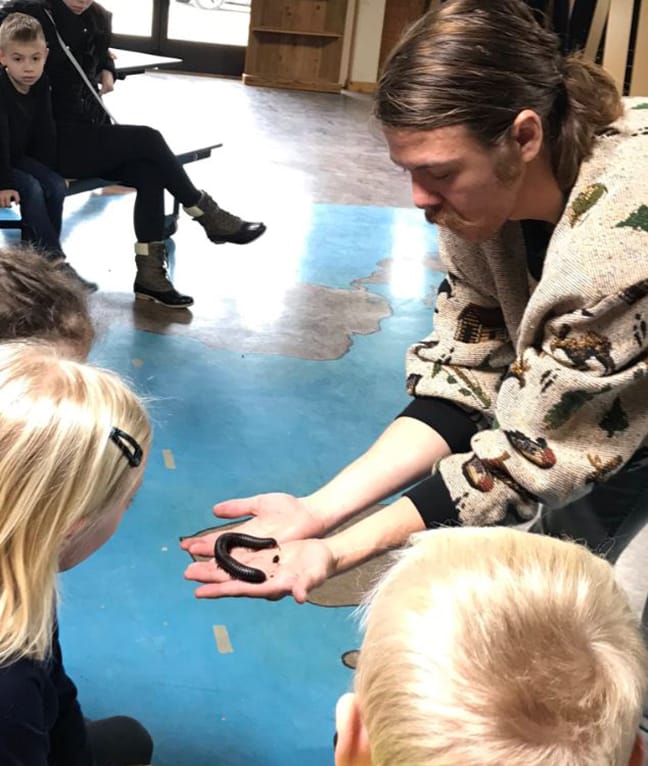
“We are looking to have education offerings at the (Admission Center) and Overlook where our general guests can engage spontaneously, but the hope is that – especially on busy days – we can have those offerings at a scheduled time so guests trying to plan their day can ensure they partake.”
Although Bullard focuses on reserved programs, he wanted to chime in on the visitor side.
“Visitor programs are just as important as reserved programs,” Bullard said. “They fulfill different needs, but the common goal is to provide world-class environmental education and experiences.”
Visitor programs strive to break down the walls that can hinder nature adventures. They create sensory experiences, which can increase awareness of the natural world and how mankind is connected to it. Visitor programs are offered either scheduled or impromptu, as well as through community nights and events. There will also be hikes, amphitheater conversations, and other activities at the Overlook.
“Our free visitor programs are designed with drive-thru guests in mind,” Baker said. “So, they will be 5-20 minute programs, activities, and hikes, as opposed to a multi-hour activity. We know those guests will be eager to get back to the (Gosdin) Scenic Drive and see more of our animal species.”
What longtime Fossil Rim education fans may remember as “homeschool programs” or “family programs” are now “herd programs,” and those events will be on Mondays and Saturdays. These fee-based visitor programs are how Fossil Rim will continue to accommodate homeschool students.

“We are continuing to develop our herd programming, which will offer scheduled, paid events that any group can come participate in – a homeschool group, a group of adults, etc.,” Baker said. “Homeschoolers are used to learning among a wide age range in a group.”
Arledge touched on the “herd” term.
“We are going with herd programming, as opposed to family programming,” she said. “Obviously, the group can be much more diverse than a family. The Monday events will probably be when most of our homeschoolers visit, plus we will have the Saturday offerings.”
The Time Draws Near
The education section of the fossilrim.org website will be entirely new this spring, and with it will come online registration for these programs.
“We are nearly fully booked into the summer, which is a great problem to have,” Arledge said. “We will announce the debut of the new website page on social media, as well as when online registration opens. I highly suggest any parent or teacher who is interested in these programs we have described follow Fossil Rim’s Facebook page closely for future updates.”
Excitement And One Proud Director
When the education staff was being interviewed for this blog, the excitement in their behind-the-scenes efforts reaching culmination was palpable.
“I’m so excited about the new content we are offering!” Little exclaimed enthusiastically.
“Everyone at Fossil Rim who has learned about what we are going to do seems excited,” Bullard added. “People in the communities we’ve spoken to are excited, and Emily speaks for all of us in her excitement.”
Arledge beamed with pride as she reflected on the big picture of the department’s massive undertaking and the work that went into it.
“When we sat down to begin this process and I mentioned how much would change, I was very impressed with how much the education staff got behind it,” she said. “I challenged them to create programs they would want to come to if they were a teen or preteen. We even stay in immersive learning mode when we have meals during these programs, so I’d definitely say this was a difficult curriculum to write.
“I’m so proud of my staff, and I think people will enjoy all of this so much. Word-of-mouth will fuel enrollment, and I think students are really going to retain and apply this material. It is a wonderful feeling knowing what a huge impact we will be making in both conservation and education.”
Blogger’s Take
I believe Marketing Associate Tye Chandler, known more succinctly as “me,” was the lone person not on the education staff to attend all four Evenings With Education. Taking my promotional hat off for just a moment, I can honestly say they were all a lot of fun and even this thirty-something adult learned so much at each one. Just for the record, what Emily referred to as “the big relay” at the end of Keeping Up With The Conservationists was my favorite portion of any of the programs. Each week, I’d look around the room occasionally and just smile when I would see how much fun everyone was having during a time they usually would be home with their families or doing whatever they do in their free time. We work in a special place where staff from other departments will support education like this, but the truth is – if you came to those February evenings with an open mind and were ready to learn – you saw exactly why our education team is so excited. Knowledge is power and, when guests go through these programs, they are going to be transformed into insightful, passionate conservationists.
-Tye Chandler, Marketing Associate

